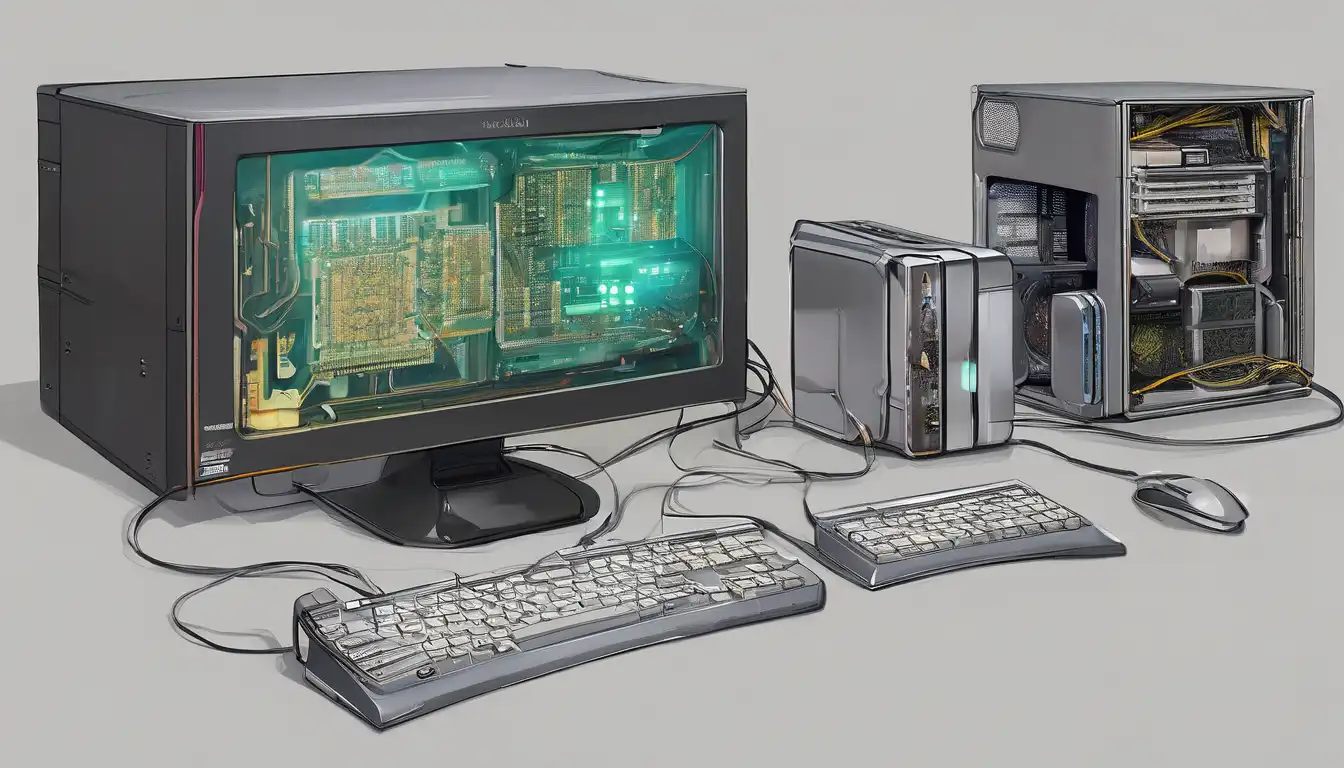Revolutionary Advances in Computer Hardware Technology
The landscape of computer hardware is undergoing unprecedented transformation, with innovations emerging at an accelerated pace. From quantum computing breakthroughs to AI-optimized processors, the latest hardware developments are reshaping how we interact with technology. These advancements not only enhance performance but also open new possibilities for applications across various industries.
Next-Generation Processors and Computing Architecture
The processor market has witnessed remarkable evolution with companies like Intel, AMD, and Apple pushing the boundaries of what's possible. AMD's Ryzen 7000 series processors featuring Zen 4 architecture have demonstrated significant performance improvements, while Intel's Raptor Lake processors continue to compete fiercely in the high-performance computing segment. The most exciting development comes from Apple's M-series chips, which have revolutionized power efficiency without compromising performance.
Quantum computing represents the frontier of processor technology. Companies like IBM and Google are making substantial progress in developing practical quantum processors that could solve complex problems beyond the reach of classical computers. These quantum systems leverage qubits instead of traditional bits, enabling parallel processing capabilities that could transform fields like cryptography, drug discovery, and climate modeling.
Graphics Processing Unit (GPU) Innovations
NVIDIA's RTX 40 series GPUs have set new standards for graphics performance and AI acceleration. The Ada Lovelace architecture introduces DLSS 3.0 technology, which uses AI to generate frames and dramatically improve gaming performance. Meanwhile, AMD's RDNA 3 architecture powers their RX 7000 series, offering competitive performance with enhanced energy efficiency.
The integration of AI capabilities directly into GPUs marks a significant shift in hardware design. These AI-accelerated graphics cards are not just for gaming anymore—they're becoming essential tools for content creation, scientific research, and machine learning applications. The parallel processing power of modern GPUs makes them ideal for handling complex computational tasks efficiently.
Memory and Storage Breakthroughs
DDR5 memory technology has become mainstream, offering significantly higher bandwidth compared to previous generations. With speeds starting at 4800 MT/s and scaling beyond 8000 MT/s, DDR5 memory provides the necessary foundation for next-generation computing applications. The technology also introduces improved power management features and error correction capabilities.
Storage technology continues to evolve with PCIe 5.0 SSDs delivering unprecedented read/write speeds. These solid-state drives can achieve sequential read speeds exceeding 10,000 MB/s, dramatically reducing load times for applications and games. The adoption of QLC NAND flash technology has also made high-capacity SSDs more affordable, enabling terabyte-scale storage solutions for mainstream users.
Advanced Cooling Solutions
As hardware components generate more heat, innovative cooling solutions have become crucial. Liquid cooling systems have evolved from exotic enthusiast options to mainstream solutions. AIO (All-In-One) liquid coolers now offer reliable performance with minimal maintenance requirements. Phase-change cooling and immersion cooling technologies are emerging for extreme performance scenarios, particularly in data centers and high-performance computing environments.
Advanced thermal interface materials and vapor chamber designs have improved heat dissipation efficiency. These innovations allow hardware to maintain optimal temperatures even under heavy loads, ensuring consistent performance and longevity. The development of smart cooling systems that dynamically adjust based on workload represents another significant advancement in thermal management technology.
Peripheral and Connectivity Innovations
The USB4 standard has brought substantial improvements to connectivity, offering speeds up to 40 Gbps and supporting multiple protocols simultaneously. Thunderbolt 4 technology, built on the USB4 specification, provides even more robust connectivity options for professional users. These advancements enable faster data transfer, higher-resolution display support, and more efficient peripheral connectivity.
Wireless technology has seen remarkable progress with Wi-Fi 6E and the emerging Wi-Fi 7 standards. These technologies offer reduced latency, increased bandwidth, and improved reliability for wireless connections. Bluetooth 5.3 and upcoming versions continue to enhance wireless peripheral performance, making cord-free computing more practical than ever before.
Specialized Hardware for AI and Machine Learning
Dedicated AI accelerators have emerged as a critical component in modern computing systems. Google's Tensor Processing Units (TPUs) and specialized AI chips from companies like Graphcore are designed specifically for machine learning workloads. These specialized processors can perform AI computations much more efficiently than general-purpose CPUs or even GPUs.
Neuromorphic computing represents another frontier in specialized hardware. These systems mimic the neural structure of the human brain, potentially offering more efficient processing for certain types of AI tasks. While still in early stages, neuromorphic chips could revolutionize how we approach artificial intelligence and pattern recognition problems.
Future Trends and Emerging Technologies
Several emerging technologies promise to shape the future of computer hardware. Photonic computing, which uses light instead of electricity for data transmission, could dramatically increase processing speeds while reducing power consumption. 3D chip stacking technology continues to evolve, enabling more components to be packed into smaller spaces while improving thermal performance.
The integration of hardware security features has become increasingly important. Technologies like hardware-based encryption, secure enclaves, and physical unclonable functions are being incorporated directly into processors and other components to protect against cyber threats. These security enhancements are becoming essential as computing devices handle more sensitive data and critical operations.
As we look to the future, the convergence of these hardware innovations will continue to drive computing capabilities forward. The boundaries between different types of processing units are blurring, with heterogeneous computing architectures becoming more common. This integration allows systems to allocate specific tasks to the most appropriate hardware components, optimizing performance and efficiency across diverse workloads.
The ongoing miniaturization of components, combined with new materials and manufacturing techniques, suggests that hardware innovation will continue at an accelerated pace. These developments promise to make computing more powerful, efficient, and accessible, opening new possibilities for applications we haven't even imagined yet.
